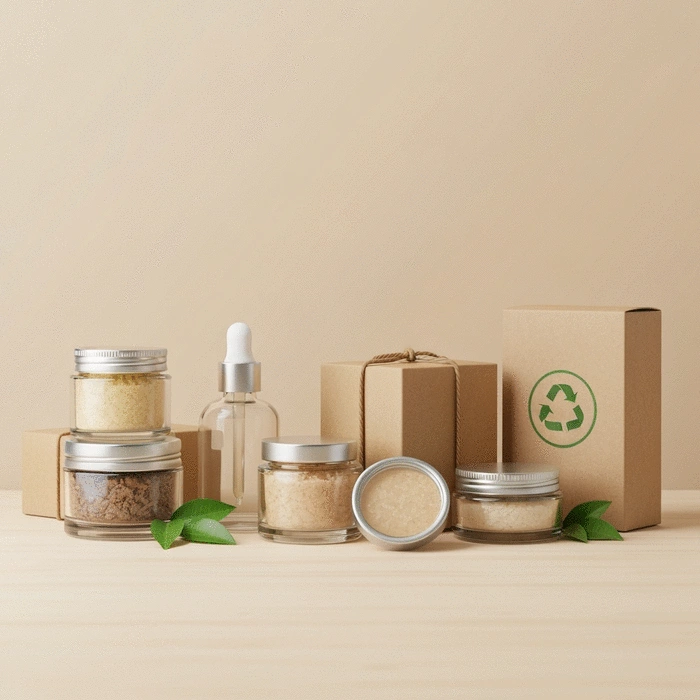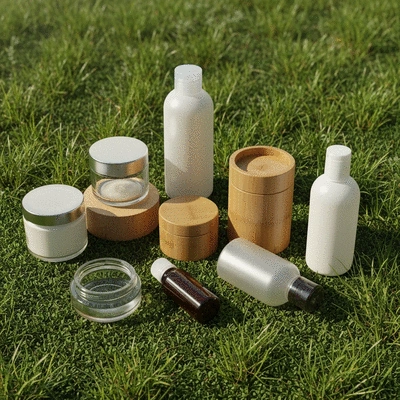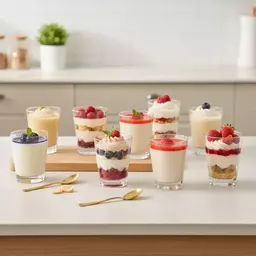What Defines Sustainable Packaging?
Minimizing environmental impact throughout its life cycle.
Stay ahead with the latest packaging innovations and insights from Clara Voss and Innovative Packaging Solutions.
Posted on: 2025-10-20
By: Clara Voss
As the cosmetics industry evolves, sustainability is no longer a choice but a necessity. Brands must adapt to consumer expectations for eco-friendly practices and innovative packaging solutions.
This visual summarizes key aspects of sustainable cosmetic packaging, highlighting what defines it, the importance of eco-friendly materials, and future trends driving its adoption.
Minimizing environmental impact throughout its life cycle.
As we dive into the world of cosmetic packaging, it’s essential to grasp what sustainable packaging truly means. Sustainable cosmetic packaging refers to the use of materials and processes that minimize environmental impact while ensuring the packaging serves its purpose effectively. This involves considering factors such as material sourcing, recyclability, and the overall life cycle of the packaging. At Innovative Packaging Solutions, we believe that every small step towards sustainability can make a significant difference in our planet's health!
The discussion around sustainable packaging has grown immensely, with more brands recognizing their role in environmental stewardship. It’s not just about being eco-friendly; it’s about creating a lasting impact that resonates with consumers who care about the planet.
To truly understand sustainable cosmetic packaging, we need to evaluate its core components. Sustainable packaging incorporates a variety of elements:
These elements not only enhance the packaging's sustainability but also align with the values of modern consumers. As someone deeply embedded in the packaging industry, I’ve seen how these attributes can elevate a brand's image and foster consumer loyalty.
Choosing eco-friendly materials is vital in the cosmetics industry. Many traditional packaging materials create significant waste, and with increasing consumer awareness of environmental issues, brands must adapt. By opting for materials like recycled plastics, glass, or biodegradable substances, companies can demonstrate their commitment to sustainability. This is not just a trend; it’s a movement towards responsible beauty!
At Innovative Packaging Solutions, we strive to provide our clients with options that not only meet their aesthetic needs but also align with sustainable practices. For instance, the U.S. Plastics Pact's 2023-24 Impact Report highlights significant advancements in recycled content and compostable packaging, showcasing the growing industry commitment to these materials. Here are some eco-friendly materials we recommend:
These choices can significantly reduce the environmental impact of cosmetic packaging while still delivering the quality and functionality expected by consumers.
Biodegradable and compostable packaging options are becoming increasingly popular in cosmetics. Unlike traditional plastics, these materials break down naturally, reducing the burden on landfills. Products like compostable bags and biodegradable containers can decompose in a matter of months, not years! The Wiley Online Library discusses the role of biodegradable materials in reducing environmental footprints, reinforcing their importance in sustainable packaging.
Here are some key benefits of these options:
At Innovative Packaging Solutions, we are committed to exploring and offering these innovative options, ensuring that our clients can embrace sustainability while maintaining their brand integrity. It’s exciting to be part of a field that's evolving so rapidly towards eco-friendly solutions!
When selecting sustainable packaging for your cosmetic products, always consider the entire life cycle of the materials. Opt for suppliers that offer transparency in sourcing, and prioritize those that utilize renewable or recycled materials. This not only reduces your brand's environmental footprint but also resonates strongly with eco-conscious consumers who appreciate brands committed to sustainability.
As we look ahead in the world of cosmetic packaging, it's clear that consumer expectations and regulatory influences are shaping the landscape. More than ever, customers are seeking brands that prioritize sustainability. They want to feel good about their purchases, knowing that they are making choices that positively impact the environment. Additionally, regulations are tightening, pushing brands to adopt sustainable practices. This shift is not just a trend; it’s a necessity for brands looking to stay relevant.
In light of these changes, companies like Innovative Packaging Solutions are adapting swiftly. We understand the importance of being proactive, and as a packaging provider, we are committed to offering eco-friendly options that align with these growing consumer demands.
These factors are driving brands to rethink their packaging strategies. It's not just about aesthetics anymore; it’s about responsibility. The Sustainable Packaging Coalition provides regular updates on packaging policy news, highlighting the increasing regulatory landscape brands must navigate. By addressing these expectations, brands can not only meet regulatory requirements but also build stronger connections with their customers.
Innovation is at the heart of developing sustainable packaging solutions. As we explore new materials and technologies, we discover exciting possibilities for cosmetic packaging. From bio-based plastics to cutting-edge manufacturing techniques, innovation paves the way for more sustainable options. Brands can now leverage these advancements to reduce their environmental impact without compromising on quality.
At Innovative Packaging Solutions, we continuously seek out innovative materials that not only enhance product functionality but also contribute to sustainability. This commitment helps our clients stay ahead of the curve in an ever-evolving market.
One of the most significant trends is the shift towards a circular economy. This approach focuses on designing packaging that can be reused, recycled, or composted at the end of its life cycle. By embracing this model, brands can dramatically minimize waste and use resources more efficiently. Implementing a circular economy requires collaboration across the supply chain, and it’s something we strive for at Innovative Packaging Solutions.
By adopting a circular economy framework, brands not only contribute to environmental sustainability, but they also create a more resilient business model. This strategy positions them as leaders in the industry, demonstrating a commitment to both the planet and their customers.
Here are some common questions about sustainable cosmetic packaging, addressing key concerns and providing concise answers based on the information discussed.
Sustainable cosmetic packaging involves using materials and processes that minimize environmental impact throughout the packaging's entire life cycle, from sourcing to disposal. Key aspects include using renewable resources, ensuring recyclability or compostability, and reducing material usage and carbon footprint.
Eco-friendly materials are crucial because traditional packaging often generates significant waste. Using materials like post-consumer recycled plastics, glass, metal, bamboo, and biodegradable substances helps reduce environmental impact, aligns with increasing consumer demand for responsible brands, and helps companies meet tightening regulations on plastic waste.
Biodegradable and compostable packaging options break down naturally, significantly reducing landfill waste. They can also improve soil health when properly composted and foster a positive brand perception among environmentally conscious consumers.
Consumer expectations for eco-friendly and transparent products, alongside stricter regulations on plastic waste, are major drivers for brands to adopt sustainable packaging practices. These factors push brands to innovate and rethink their packaging strategies to stay relevant and responsible.
A circular economy approach focuses on designing packaging to be reused, recycled, or composted, thereby minimizing waste and maximizing resource efficiency. This involves initiatives like designing for multiple uses, creating take-back programs, investing in recycling partnerships, and educating consumers on proper disposal.
Here is a quick recap of the important points discussed in the article:



 Choosing the right planting method can significantly impact your gardening success. As a gardener, u
Choosing the right planting method can significantly impact your gardening success. As a gardener, u
 As brands strive to resonate with an increasingly personalized consumer base, the packaging of produ
As brands strive to resonate with an increasingly personalized consumer base, the packaging of produ
 In the world of foodservice, presentation and convenience are key. By embracing microwave-safe desse
In the world of foodservice, presentation and convenience are key. By embracing microwave-safe desse